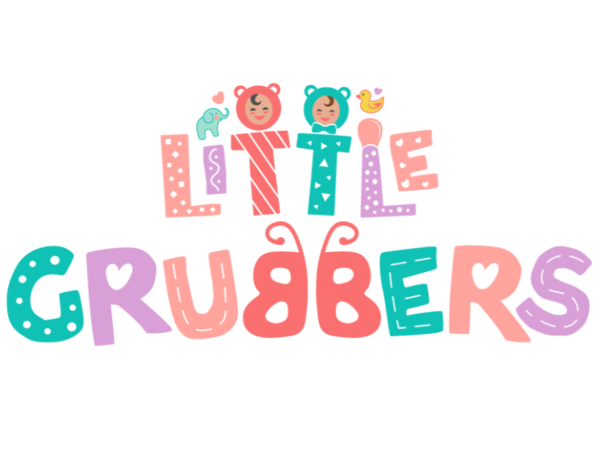Every Parent’s Concern—Is My Baby Eating Enough?
As a parent, you’ve probably asked yourself, “Is my baby eating enough?” at least a dozen times. It’s a common worry, especially when your little one seems to be eating too little, too much, or inconsistently.
The truth is, every baby is different, and their appetite can change daily. Understanding hunger cues, fullness signs, and growth patterns will help you feel more confident about your baby’s feeding habits.
1. Signs Your Baby is Eating Enough
Instead of counting every ounce or bite, watch for these signs that your baby is getting enough food:
✅ Steady Weight Gain – Your baby should be following their growth curve, even if their weight gain isn’t the same each week.
✅ Content After Feeding – A satisfied baby will be calm, happy, and relaxed after meals.
✅ Consistent Wet & Dirty Diapers – Expect 6+ wet diapers and 1-3 dirty diapers per day, depending on age.
✅ Active & Alert Behavior – A well-fed baby is usually energetic and engaged when awake.
💡 Tip: Instead of worrying about each meal, focus on your baby’s overall intake over a few days—some days they’ll eat more, other days less.
2. Baby Hunger Cues: How to Tell When Your Baby is Hungry
Your baby will show you when they’re hungry! Look for these early signs before they get fussy:
👶 Opening Mouth & Rooting – Turning head toward your hand or breast.
🖐 Hand Sucking or Lip Smacking – A natural self-soothing hunger cue.
👀 Excited Kicking & Reaching – A sign your baby is ready to eat!
💡 Tip: Feeding your baby before they cry makes mealtimes smoother. Crying is a late hunger cue, and by then, they may be too upset to feed well.
3. How to Recognize Baby Fullness Cues
Just like hunger, babies show clear signs when they’re full:
🚫 Turning Away or Pushing Food Away – A clear “I’m done” signal.
😌 Slowing Down or Losing Interest – Less excitement around food.
👐 Playing with Food Instead of Eating – If they’re smashing it, they’re probably full!
💤 Becoming Sleepy – Common in younger babies after a full feed.
💡 Tip: Avoid the temptation to force more bites. Trust your baby’s ability to self-regulate their intake.
4. Understanding Growth Spurts & Appetite Changes
Your baby’s appetite isn’t always the same—some weeks they’ll seem extra hungry, and other times, they’ll eat less.
Common Growth Spurts (When Babies May Eat More):
📌 2-3 Weeks
📌 6 Weeks
📌 3 Months
📌 6 Months
📌 9 Months
💡 Tip: During growth spurts, your baby may want to eat more frequently—this is normal! Follow their cues and offer more if needed.
5. Creating a Baby Feeding Schedule (But Staying Flexible!)
While strict schedules aren’t always necessary, a gentle routine helps babies feel secure.
Sample Feeding Schedule (6-12 Months)
🕘 8:00 AM – Breakfast (solids + breastmilk/formula)
🕛 12:00 PM – Lunch (solids + milk)
🕒 3:00 PM – Snack (soft fruit or yogurt)
🕕 6:00 PM – Dinner (solids + milk)
🕘 9:00 PM – Bedtime milk feed
💡 Tip: Adjust meal timing based on your baby’s natural hunger cues. No need to force a rigid schedule!
6. What If Your Baby Isn’t Eating Enough?
If your baby consistently refuses food, loses weight, or seems lethargic, check in with your pediatrician.
Possible Reasons for Low Appetite:
🦷 Teething Pain – Try offering cool, soft foods.
🤒 Illness or Congestion – A stuffy nose can make feeding harder.
🌱 Food Texture Preferences – Some babies need time to accept new textures.
🍭 Too Many Snacks or Milk Feeds – Balance solids with milk to prevent overfilling on liquids.
💡 Tip: Offer a variety of textures and flavors and keep mealtimes stress-free—babies pick up on pressure!
Final Thoughts: Trust Your Baby’s Cues!
Every baby is unique, and appetite naturally varies from day to day. The best thing you can do is:
✔ Watch for hunger & fullness cues
✔ Keep mealtimes fun & relaxed
✔ Offer a balanced variety of foods
✔ Trust your baby to eat what they need
Make Mealtimes Easier with Little Grubbers!
Helping your baby learn to self-feed? The Little Grubbers 3-in-1 Baby Spoon™ makes it simple and fun with:
✨ Easy-grip design for little hands
✨ Soft, baby-friendly material
✨ Perfect for self-feeding practice
💡 Click here to check it out and make feeding time stress-free!

